You’re well aware of the problem. So let’s cut straight to my fun solutions, all inspired by one of the best pieces of mom advice I’ve gotten: “Don’t focus on having a perfectly clean house, focus on having an EASY TO CLEAN house.”
It turns out, too many toys = too chaotic for creative play for my kids. Some psychology research also suggests that household chaos is correlated with adverse effects for kids and adults in general [1]. (So it’s not just me!) I needed a toy organization solution ASAP that addressed the following:
| Requirement | Solution |
|---|---|
|
|
|
|
|
|
|
|
|
|
|
|
And now for the details! TL;DR: you can jump straight to the following sections:
-
general toys


-
Legos

-
games

-
puzzles

-
outdoor toys were moved to our storage unit




General toy categories
We have a baby jail and play mat set up in our living room (rather than a separate dedicated play room) because:
- We don’t have a spare room.
- Toys in the bedroom are too distracting for bedtime.
- Kids bring their toys to wherever the grown-ups are anyway.
- Grown-ups can keep an eye on kiddos as needed.
These play space constraints meant that I needed to find functional (and aesthetic) systems to corral the mess and give me peace in my home. Here’s the baby jail with everything put away:
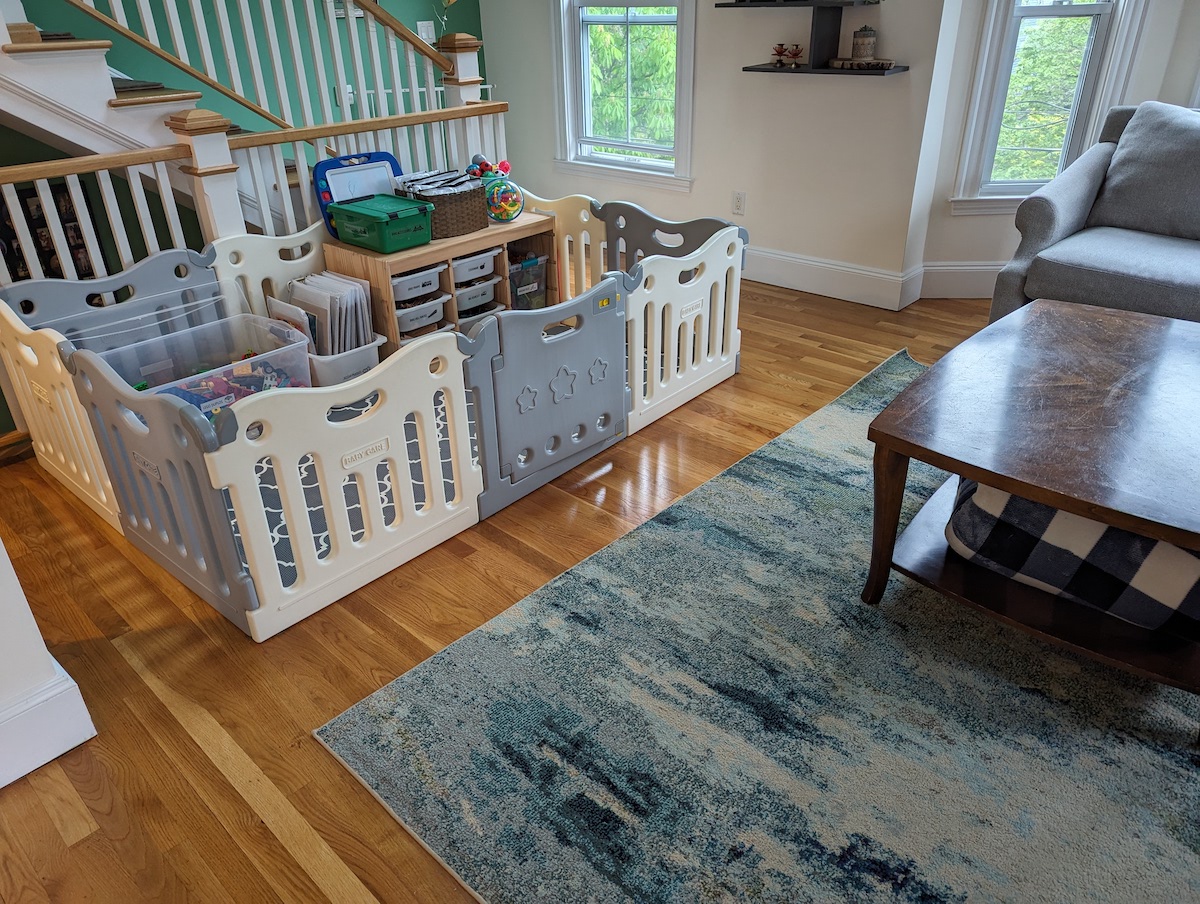
Can you see that my labels have cute little pictures? ![]() Here’s a closeup:
Here’s a closeup:
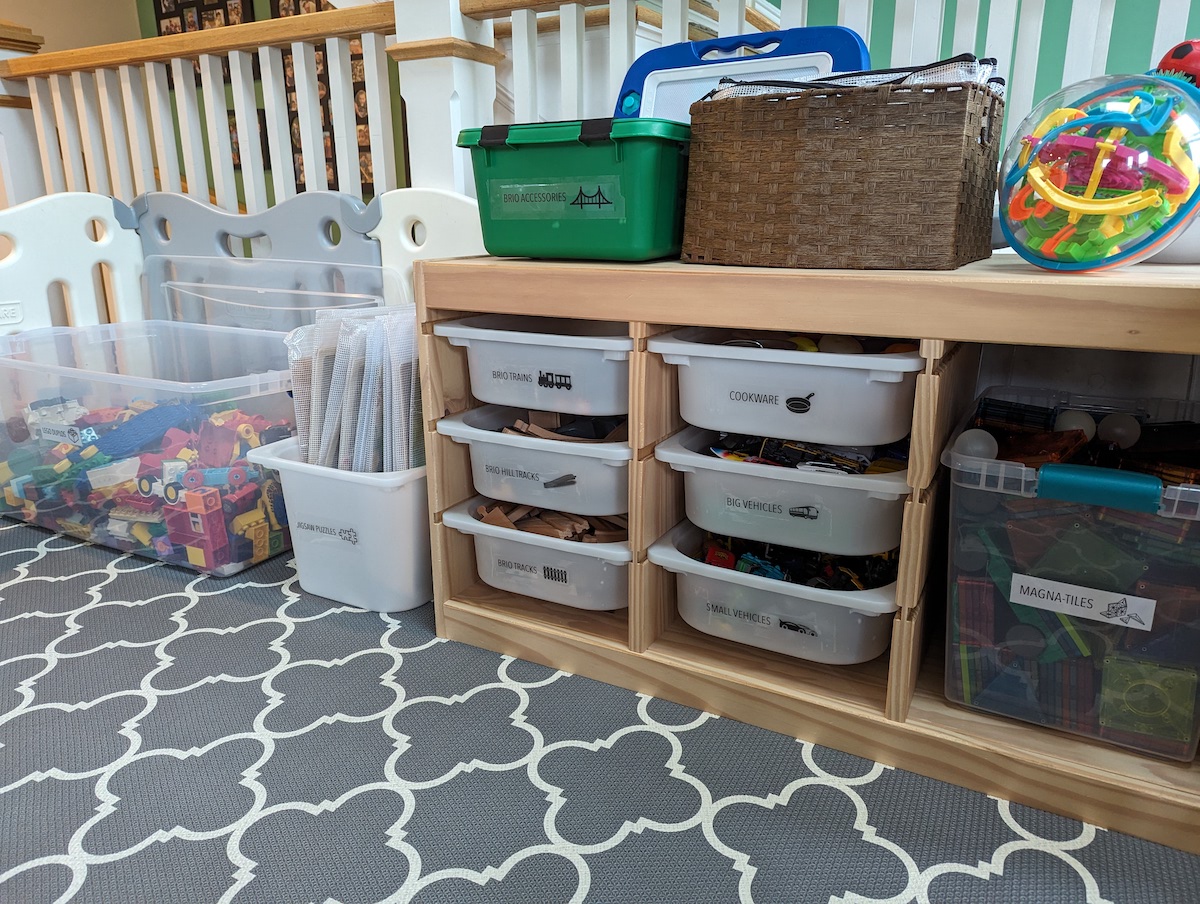
I don’t even own a label maker! I print labels out onto 8.5”x11” transparencies (that I had leftover from my entry closet organization project anyway). I stick them onto bins with clear packaging tape. These labels hold up super well and are easy to remove!
The pull out drawers are Ikea Trofast. This Trofast system is the most perfect, functional toy organization system for our space! No complaints.
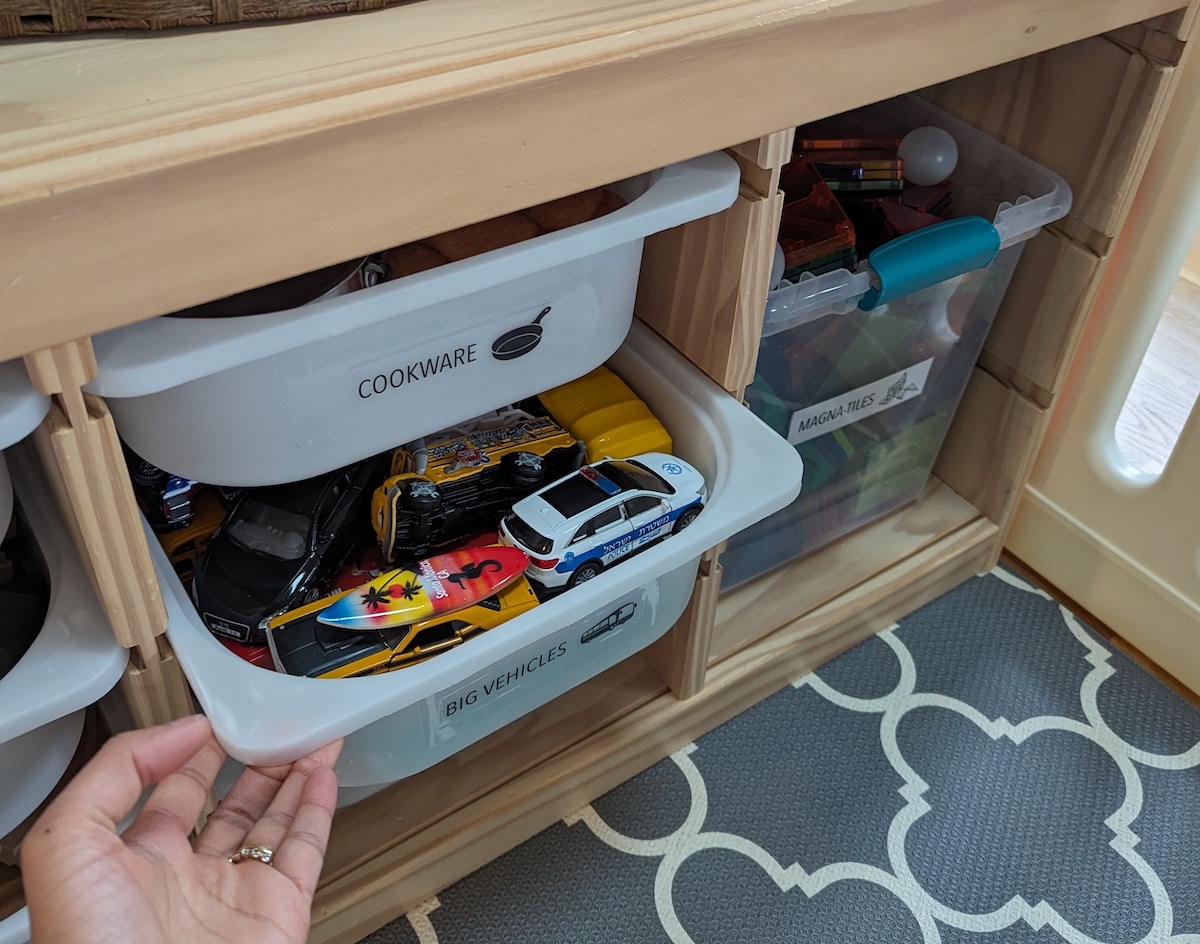
I keep some toys that come with many smaller pieces in plastic zippered bags (see below). You’ll see these bags pop up for all sorts of organizing solutions.
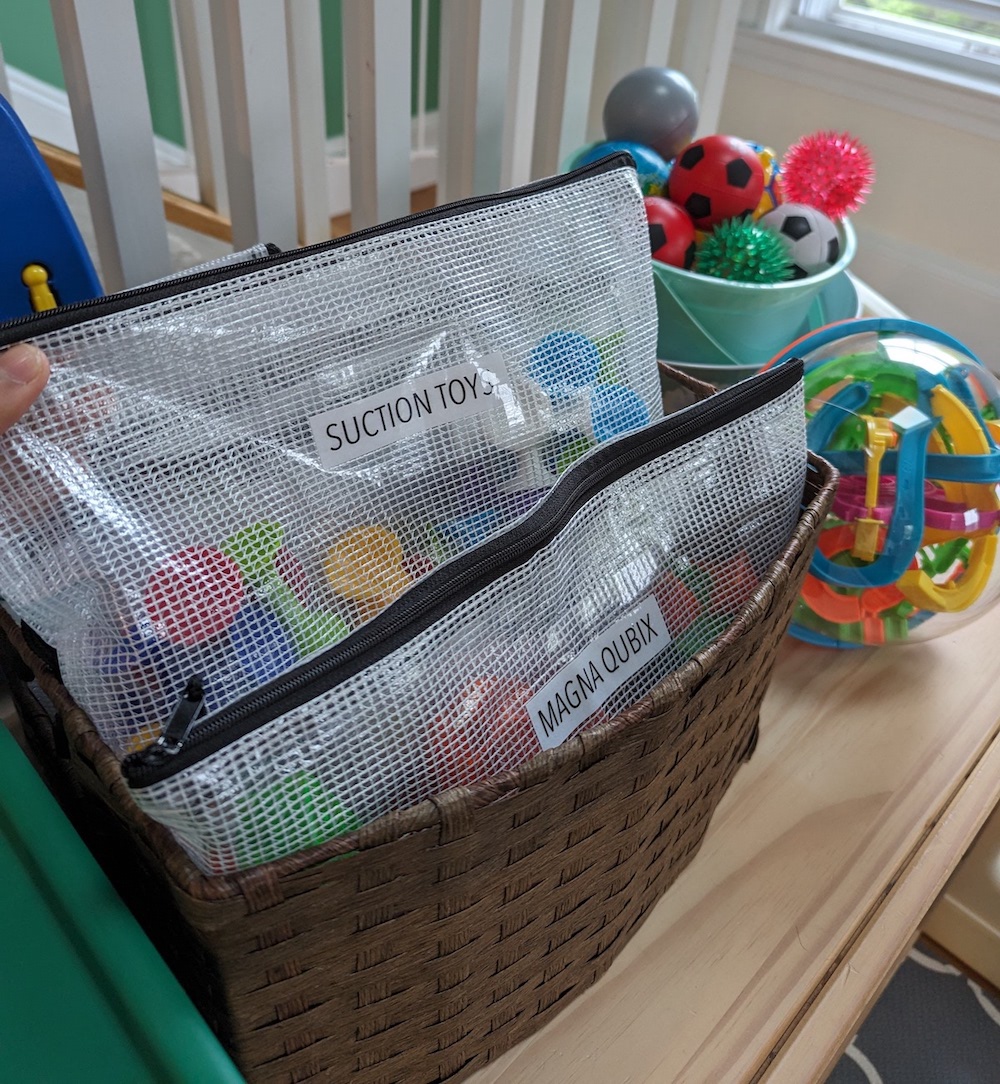
Now I’ll take you to the kids’ closet…
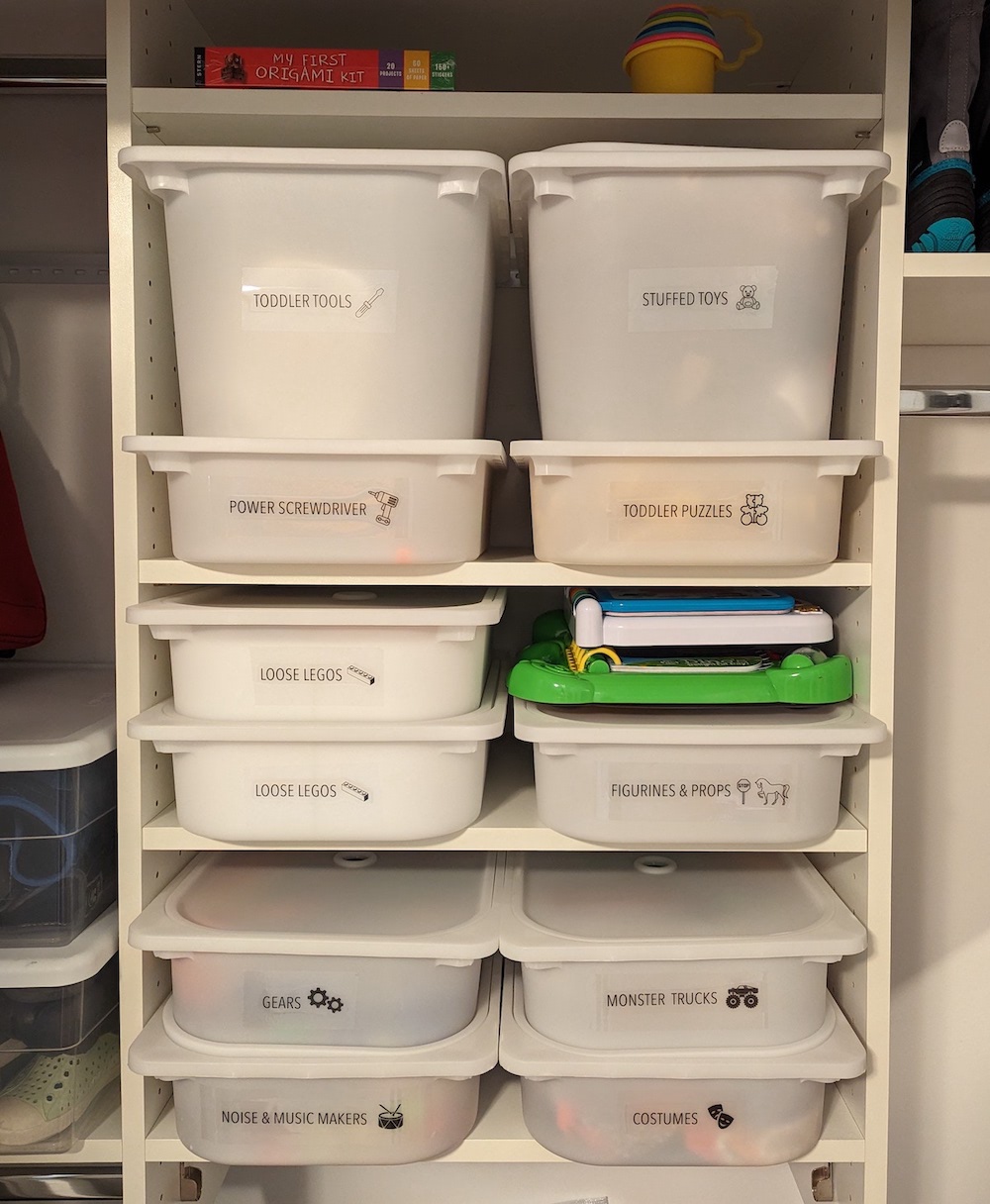
The Trofast bins have matching lids that allow them to stack! (They’ll still slide into the organizers with the lids on, too.) Every month (give or take) we swap out some toy bins in the main area with toy bins in the closet.
![]() When NOT to use Trofast bins: The shallowest (single-level) Trofast bins are the best.
Larger ones might get heavy, and you can’t see what’s at the bottom. For larger categories, clear bins are better than opaque
for kids to see what they want (and go fishing) without having to dump all the contents out or move the box at all. Our Magna-Tiles (heavy) and
Lego Duplos (too many!) are in clear bins for this reason.
When NOT to use Trofast bins: The shallowest (single-level) Trofast bins are the best.
Larger ones might get heavy, and you can’t see what’s at the bottom. For larger categories, clear bins are better than opaque
for kids to see what they want (and go fishing) without having to dump all the contents out or move the box at all. Our Magna-Tiles (heavy) and
Lego Duplos (too many!) are in clear bins for this reason.
Legos
My older son loves to have his stuff organized logically (like me!), so, I 3D-printed these custom Trofast bin inserts to organize his loose Legos by color using my same Trofast toy system. Storing Legos in a shallow, underbed storage bin would also work well, and I might have done this if we had space under the bed!
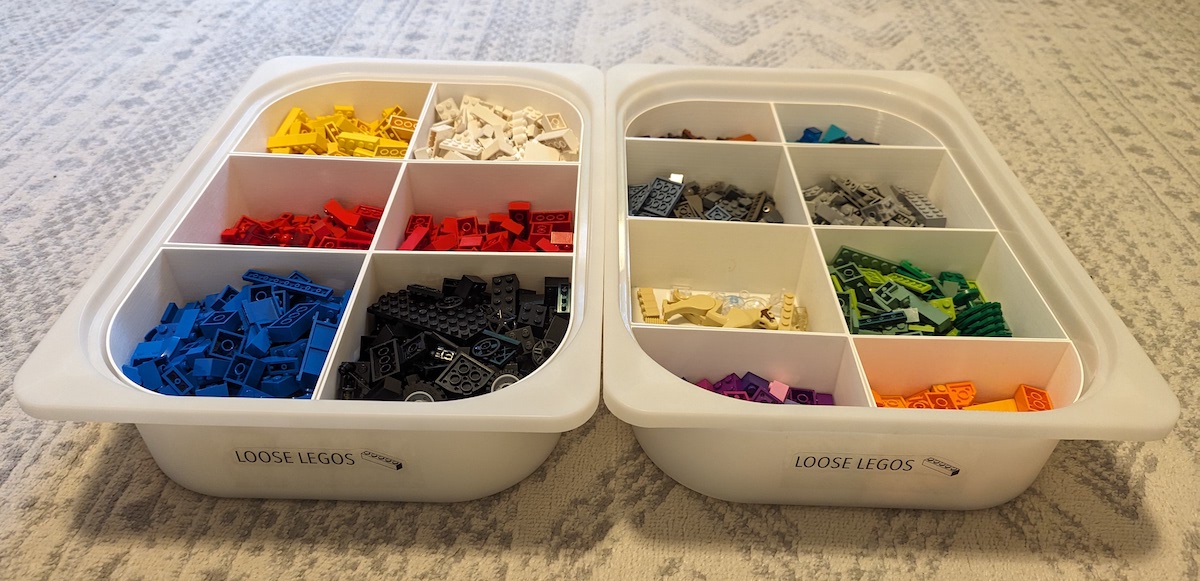
Our older kiddo is also very into Lego sets (…and assembling furniture with me). He works on these sets entirely independently, from opening the box through finished product. (I only step in to help with those irksome stickers sometimes.) I keep his yet-to-begin, in-progress, and completed Lego sets in these plastic zippered bags in the closet:
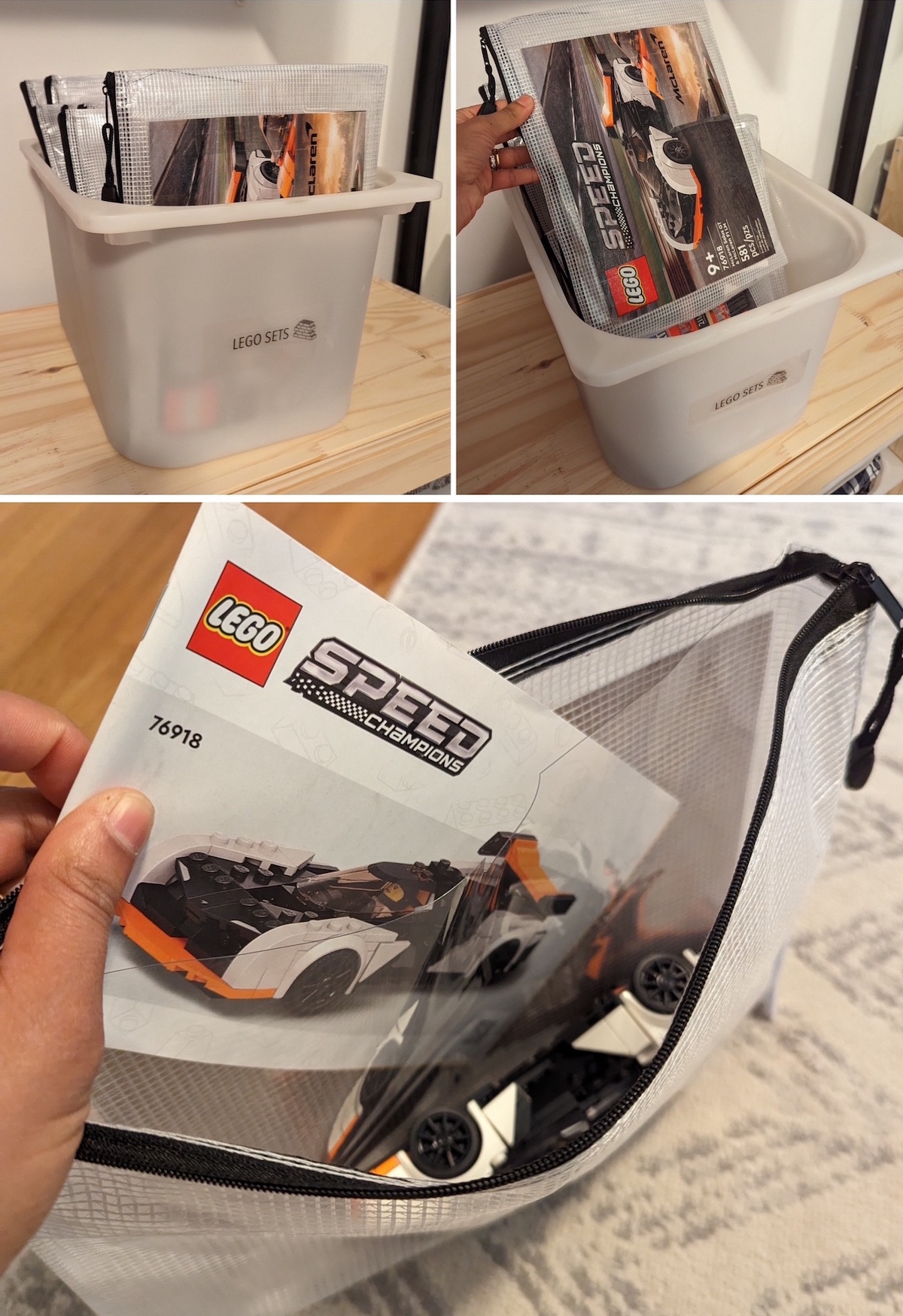
Organizing Lego sets: For newly-received sets, I cut the Lego box cover and then tape it onto these bags with clear packaging tape. The instructions and all pieces slide right in. For older sets (where I only have the instruction booklet), I Google the model number, download an image of the cover, then reformat, color-print, and laminate it before taping it onto the bag.
Games
It’s rather trendy to “decant” games into 4”x6” photo boxes. “Decant” really means transfer of liquid and is consistently used incorrectly by organization influencers… but I was influenced anyway! Here are my thoughts about this:
| Pros of Decanting Games | Pros of Original Packaging |
|---|---|
|
|
|
Our kids’ games are next to our art station, and we play at the dining table (to avoid losing pieces).
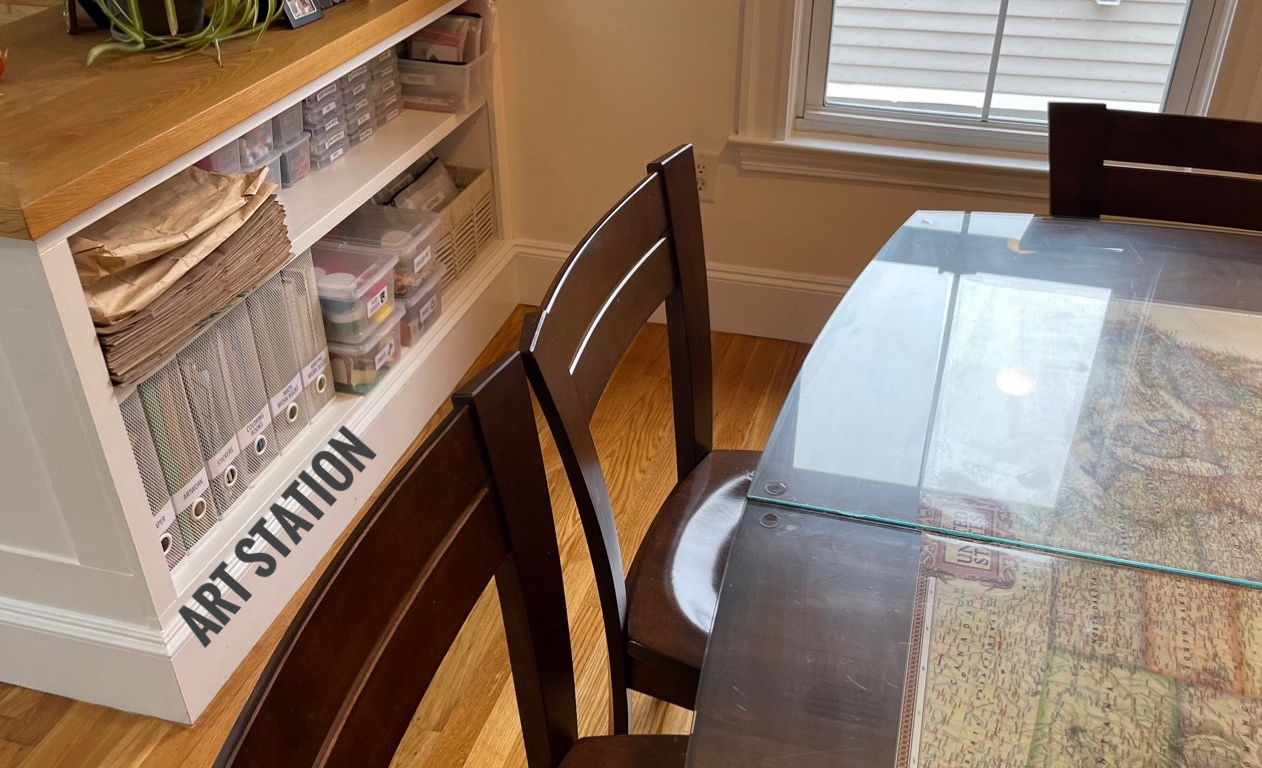
Here’s a closeup (and you can spy a propeller launcher toy that we 3D-printed!):
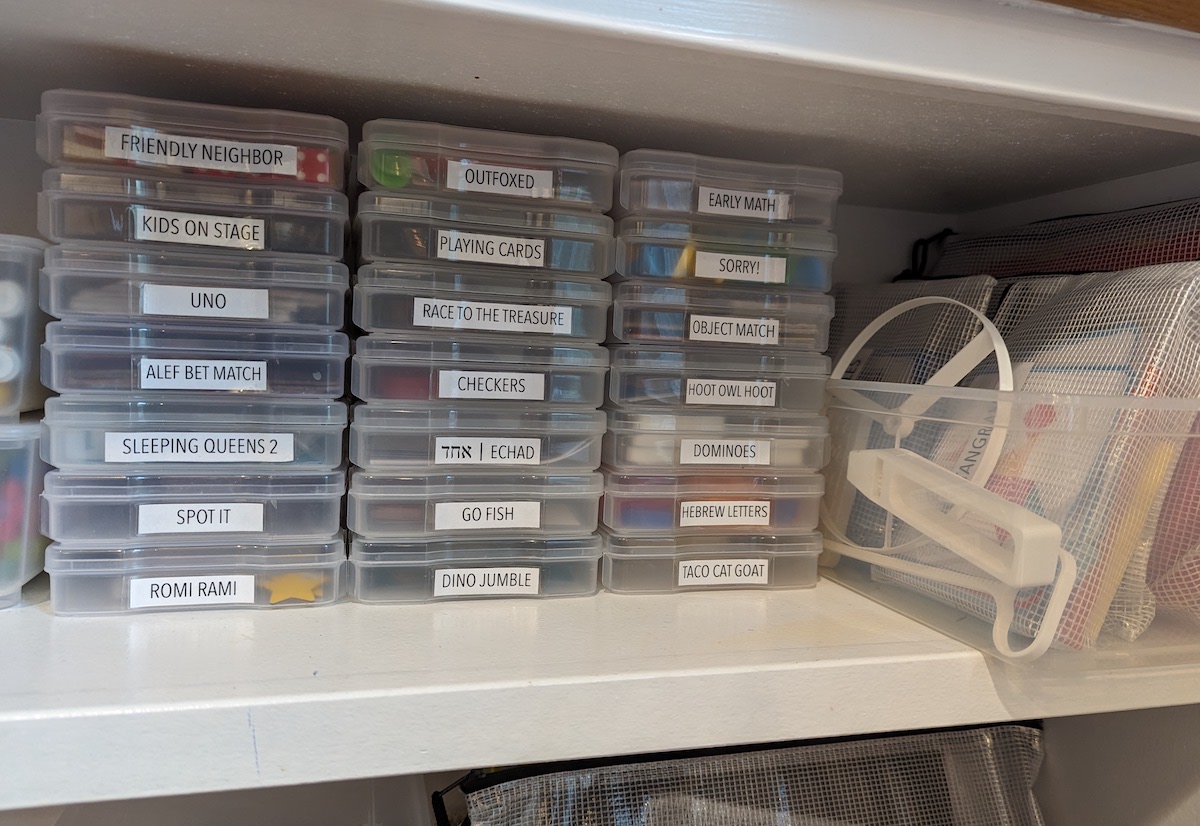
Some games with larger boards didn’t fit in these boxes. I keep the corresponding boards (with their own labels, as needed), in a bin on the shelf below:
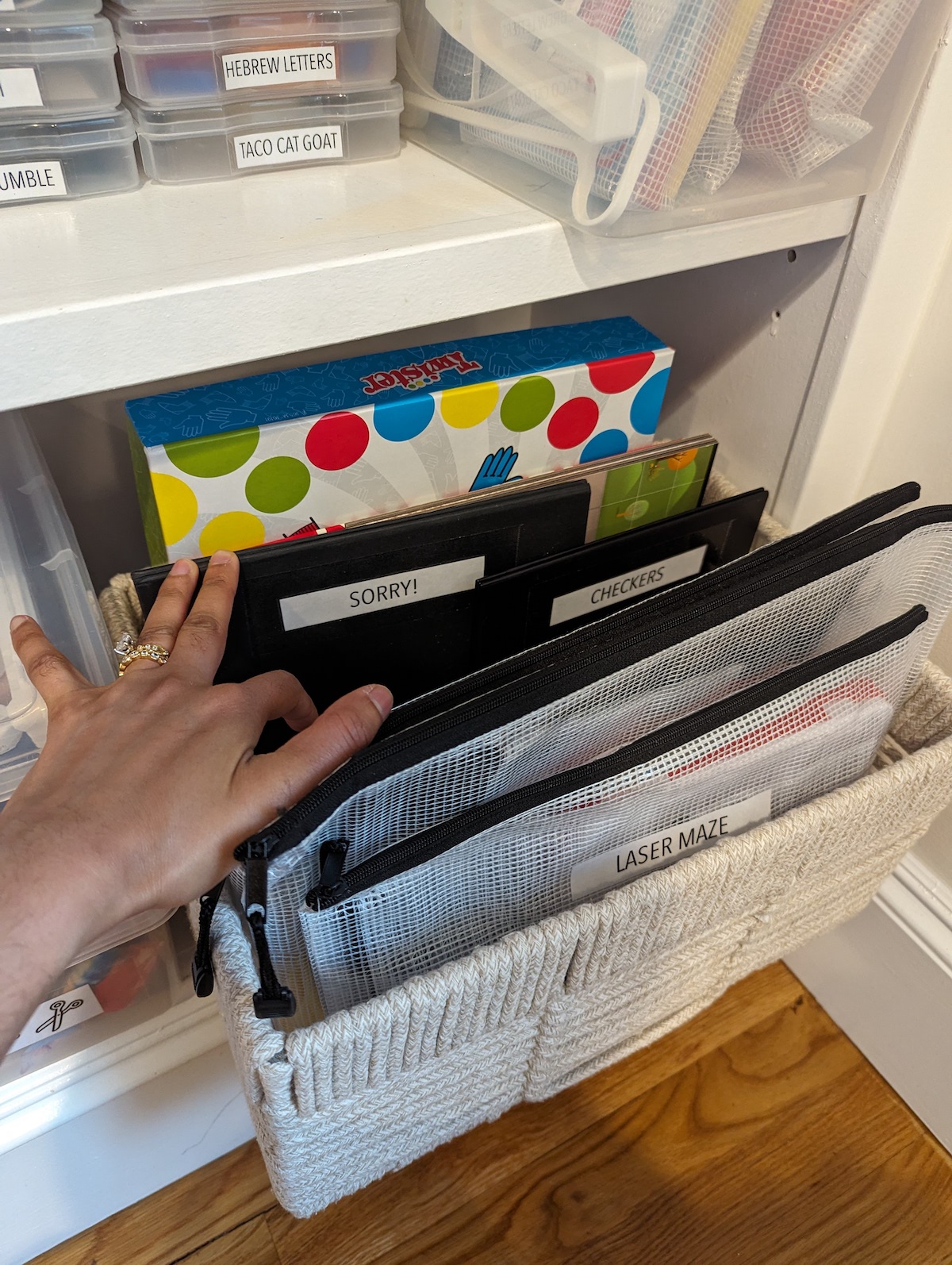
Storing game instructions: A couple of our favorite games for younger kids
(e.g., Race to the Treasure [![]() 6.2],
Hoot Owl Hoot [
6.2],
Hoot Owl Hoot [![]() 6.4] by Peaceable Kingdom)
have instructions printed directly onto the box! For these (or any other game with too-large instructions),
I find PDF copies of game instructions online, color-print them in size 4”x6”,
laminate the cards, and stick them inside the game boxes.
For games with instruction booklets that tear and crumple easily, I laminate these too.
6.4] by Peaceable Kingdom)
have instructions printed directly onto the box! For these (or any other game with too-large instructions),
I find PDF copies of game instructions online, color-print them in size 4”x6”,
laminate the cards, and stick them inside the game boxes.
For games with instruction booklets that tear and crumple easily, I laminate these too.
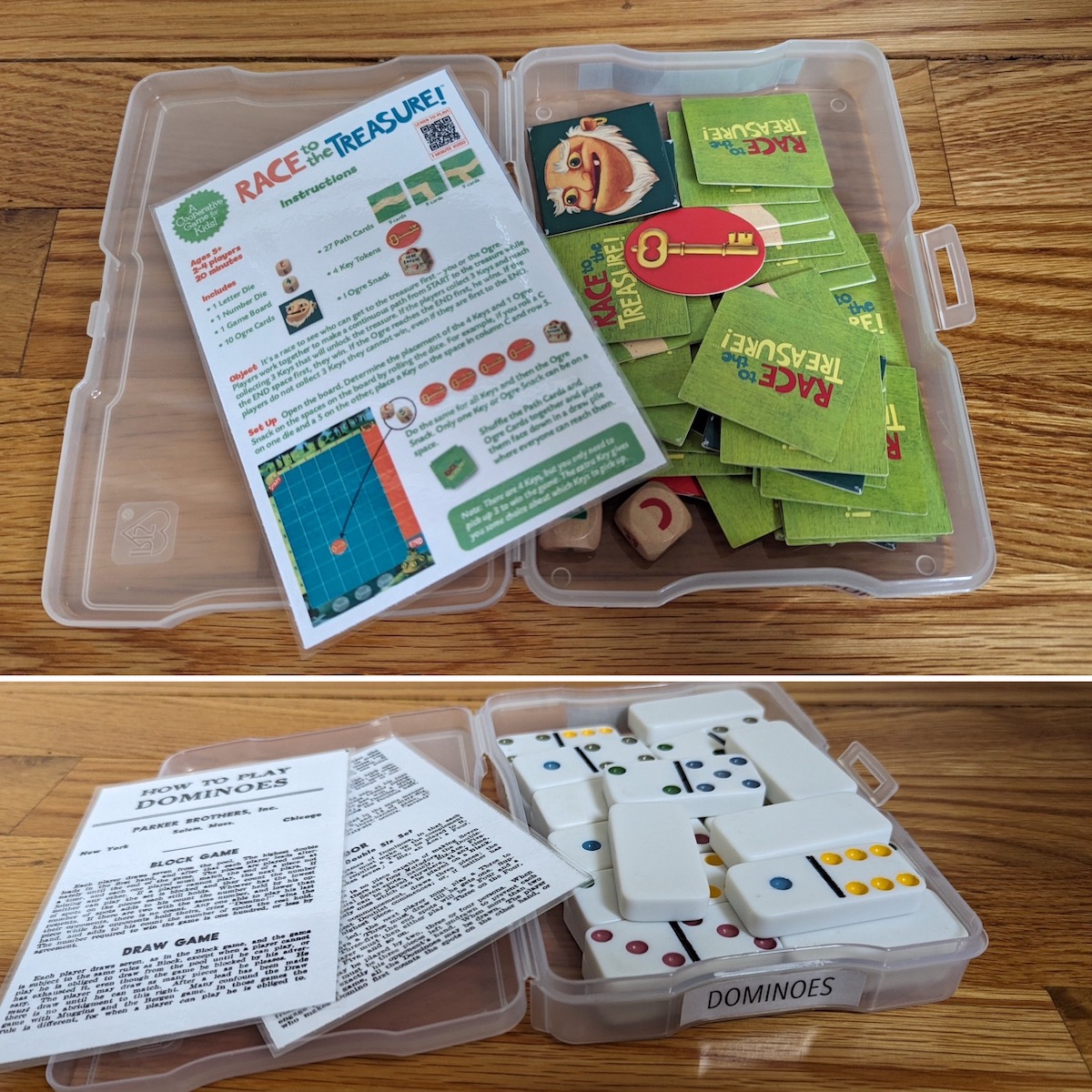
Puzzles
Toddler puzzles are kept in these gold mesh cinch-close bags (that I had leftover from putting together mishloach manot). Our 1-year-old can open and close them (and the pieces stay together):
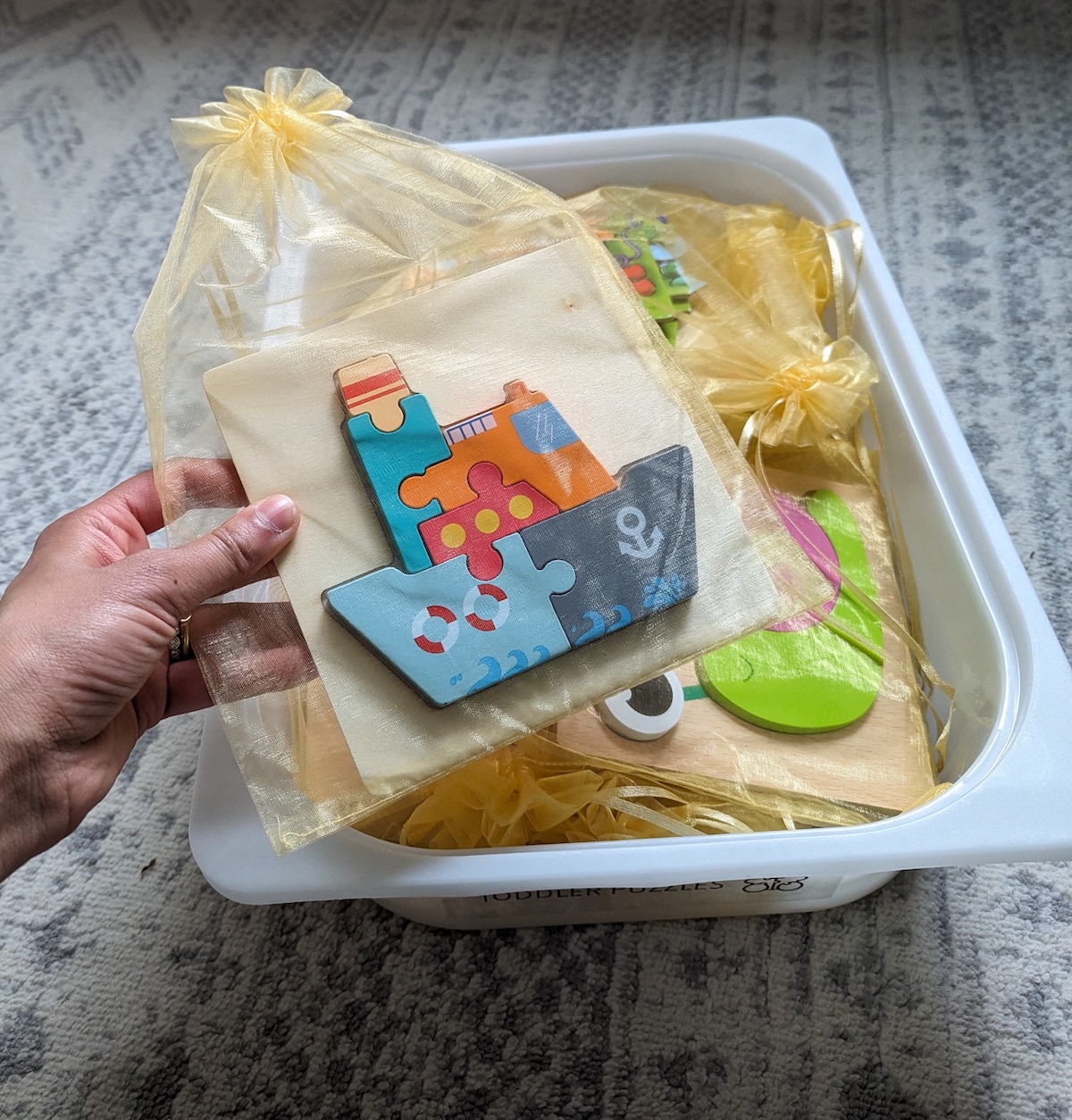
We also have jigsaw puzzles for older kids, some of which came with boards. I put these (with and without boards) into zippered plastic bags (see below).
Organizing jigsaw puzzles: It is tough to tell what the puzzles are (and how to complete them) when they are in these bags. For puzzles that come in boxes, I cut the box covers and tape them onto the bags. For other puzzles, I take a photo of each completed puzzle with my Google PhotoScan phone app, reformat and color-print the pictures, laminate them, and tape them onto the bags.
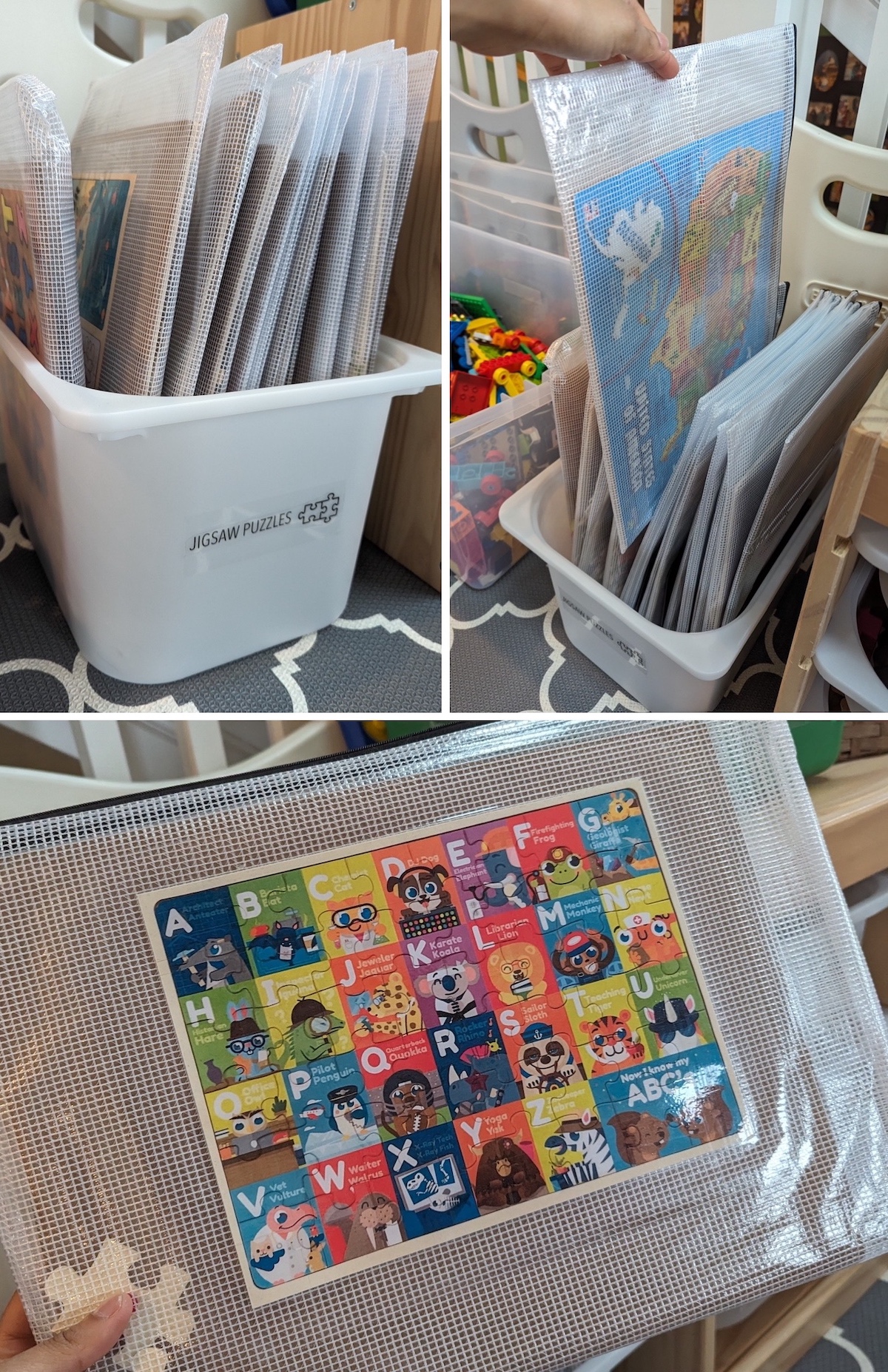
I also stuck this mesh file divider in the bottom of the Trofast bin so that puzzle boards stay upright and distributed. Working extremely well!
Conclusions and Limitations
-
These solutions will evolve. The solutions I’ve presented here work for our kids right now (3-year-old and a 1-year-old). New (future) toys may require new organization solutions!

-
Constant decluttering of toys is necessary. Keeping toys tidy and usable requires removing the unused toys that are just taking up space:
- Some large toys are not used often enough to justify the amount of space they take up.
- Before/after birthdays and holidays is a consistent, recurring time to declutter toys.

- It takes active effort to donate toys that other kids might enjoy more. Giving toys away on FB (to local families who actually want them) is easy in urban locations!
-
Toy categories can expand. Don’t be limited by your bin size if it’s too restrictive! Our vehicles bin has grown into small vehicles, big vehicles and monster trucks now!





-
Some toys are garbage. Cheap plastic toys that are designed to break after minimal use are annoying for kids and adults AND end up in the landfill. If you can avoid buying these (for yourself or as gifts), please do!


Hope you find some inspiration here to get your kids’ toys under control! It’s worth it, for everyone’s sanity, I promise!
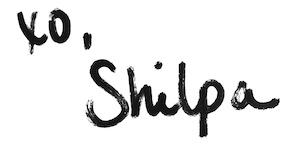
Shilpa Kobren is the Associate Director of Rare Disease Analysis at Harvard Medical School where she focuses on analyzing genomic sequencing data with patient clinical information to derive insights into human diseases. Shilpa lives in an 1890s urban apartment in Cambridge, Massachusetts with her husband and two energetic toddlers. She retains her sense of peace amid the chaos by creating and iteratively improving systems that optimize daily efficiency in her family's constrained living space.